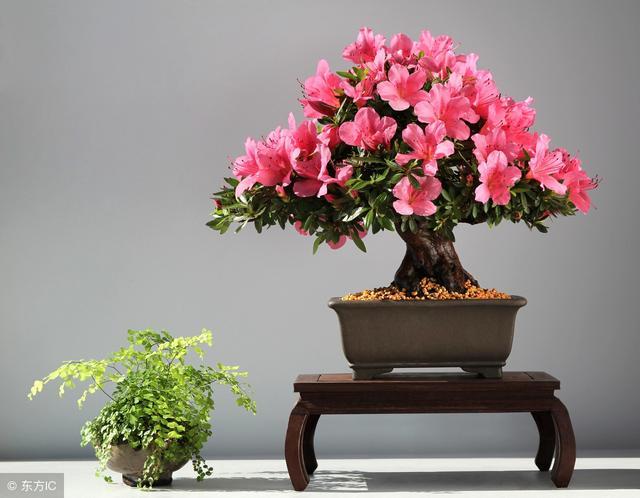Even if the leaves of these three kinds of flowers are withered, don't throw them into the growing season and replant them in full pots.

Click the blue button "follow" in the upper right corner to acquire the knowledge of potted flowers every day.
Many flowers and plants in nature will choose dormancy like animals at different ambient temperatures, and some plants will wither completely after dormancy, which is the self-adjustment of plants to the uncomfortable environment. If the temperature is too high or too low, some flowers and plants will go into dormancy, and after the dormancy period, they will show a better state than before. Today, let's get to know some common summer dormant flowers.
Cyclamen
Cyclamen is a perennial herb with flat globular tubers and heart-shaped leaves. When the flowers are fully open, the petals turn upward, much like rabbit ears, so they are also called rabbit flowers. The most suitable growth temperature of cyclamen is 15-20 ℃, so when the temperature exceeds 20 ℃, the flowers and leaves of cyclamen will gradually turn yellow and wilt with the increase of temperature, and many flower friends will mistakenly think that this is a problem of cyclamen maintenance. In fact, this is a normal phenomenon that you do not have to worry about. When the tuber is more than 30 ℃, the tuber will be completely dormant, so it is necessary to cool cyclamen as much as possible, and the reduction of flowers and leaves slows down the transpiration of cyclamen, so it is necessary to reduce the frequency of watering so that cyclamen can survive the summer safely.
Hyacinth
Hyacinth's low posture always gives people a feeling of sturdiness, and the neatly arranged colorful flowers such as fairies are also countless fans. Hyacinth leaves yellowing and flower withering is a sign of entering the dormancy period. The temperature is usually between 18 and 28 ℃ in early June, which is to take out the hyacinth bulbs in the soil or in the water, and then pull out the leaves and arrows to cut off the roots. If there are rotting places, make the rotting parts clear and rinse clean, and brush the places that cannot be washed. Then soak it in potassium permanganate solution or carbendazim solution for about 1 hour, take it out and dry, then wrap it with sawdust, toilet paper, old newspapers and other more absorbent things and store it in a cool and ventilated place. The freezer of the refrigerator is a good place.
Narcissus
Daffodils are generally raised at home from buying the bulb to soaking in the water for more than a month or so, and then the flowers will no longer bloom. At this time, many flower friends will throw away the daffodils, which is really a pity. In fact, after the daffodils bloom, you can bury them in the deep soil to continue conservation, pile up a mound with a high 50cm, take the daffodils out of the water and bury them in the soil, and wait for the temperature to rise. After all the leaves withered, the daffodils entered a dormant period, and then dug out the daffodils to cut off the fibrous roots and withered leaves, and buried them in the 10cm deep soil for maintenance.
If you want to know about the cutting or maintenance skills of other flowers and plants, you can write the flower name in the comment area below.
Click the blue button "follow" in the upper right corner to acquire the knowledge of potted flowers every day.
That's all for today's sharing, so put it away if you think it's useful!
- Prev

Daily update: cutting propagation of 100 common flowers-rhododendron
Click the blue button "follow" in the upper right corner to acquire the knowledge of potted flowers every day, also known as Yingshanhong, as the sixth of the top ten famous flowers in China. Its luxuriant branches and flowers are very good-looking, and resistant to pruning, the strange shape of the old pile is.
- Next

The silly girl put lipstick on the collarbone of the live show and failed to pretend to make fans laugh.
Silly girl live show collarbone, put lipstick on it, as a result, B failed to amuse fans! Battle Royale Games has always been hot, and many anchors are also popular because of Battle Royale Games! Among them, Douyu's chicken-eating sister silly girl is the most popular.
Related
- Wuhan Hospital Iron Tree Blooming Result Was Instantly Frightened by the Gardener Master
- Which variety of camellia is the most fragrant and best? Which one do you like best?
- What is the small blue coat, the breeding methods and matters needing attention of the succulent plant
- Dormancy time and maintenance management of succulent plants during dormancy
- Minas succulent how to raise, Minas succulent plant pictures
- What are the varieties of winter succulent plants
- How to raise succulent plants in twelve rolls? let's take a look at some experience of breeding twelve rolls.
- Attention should be paid to water control for succulent plants during dormant period (winter and summer)
- Watering experience of twelve rolls of succulent plants
- Techniques for fertilizing succulent plants. An article will let you know how to fertilize succulent plants.

